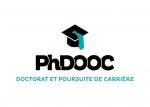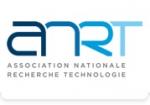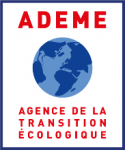SURFACTIVE: investigation of the influence of atmospheric SURFactants and PFAS on cloud droplet ACTIVation in climate changE
| ABG-132904 | Sujet de Thèse | |
| 15/07/2025 | Financement public/privé |
- Terre, univers, espace
- Chimie
- Ecologie, environnement
Description du sujet
Résumé français: Les nuages troposphériques constituent l’une des plus importantes incertitudes sur le climat. Chaque gouttelette d’eau requiert un support pour se former, appelé noyau de condensation de nuage (CCN). Seule une fraction des particules d’aérosol sert de CCN, mais la raison de ce fractionnement est inconnue. SURFACTIVE constitue la suite d'un projet en cours de finalisation (INSPIRE), il propose d'utiliser les développements analytiques effectués, ou de réanalyser les données obtenues pour approfondir la compréhension de la formation des nuages. Trois tâches interconnectées sont proposées : (1) Exploiter les méthodes développées par le projet INSPIRE pour mesurer la tension de surface et quantifier les surfactants dans l’aérosol ou les nuages; (2 et 3) réétudier la base de données pour examiner les effets de la tension de surface sur l'activation des gouttelettes de nuage, et étudier le rôle potentiel joué par les molécules amphiphiles de PFAS mesurées par spectrométrie de masse. L’analyse des résultats servira à améliorer la compréhension des processus de formation des nuages et leurs interactions avec le climat.
Scientific Context: Climate change is an important component of many concurrent global environmental changes that also affect human health, often interactively. Although our understanding of the links between climate change and human health has increased significantly in recent decades (IPCC report), there are still many knowledge gaps about likely future patterns of exposure to climate-environment change, and about the vulnerability and adaptability of physical, ecological and social systems to such climate change. In this context, improving our ability to predict future climate change is a high priority, not only because of the environmental impacts, but also because of the societal and public health implications. As clouds play a key role in the Earth’s radiation budget, the complex but incompletely understood interactions between aerosol and clouds makes cloud effects the most uncertain component of current climate projections. Furthermore, this lack of knowledge has been pointed out as one of the key challenging themes to evaluate the viability and risks of geoengineering projects. Our aim is to improve the understanding of aerosol-cloud interactions, one of the key missing pieces in climate prediction.
Atmospheric aerosols, which are composed of organic and inorganic components, can affect global radiative forcing both directly, by scattering and absorbing solar radiation, and indirectly, by serving as cloud condensation nuclei (CCN), thereby altering cloud characteristics. Aerosol-cloud interactions remain a major source of uncertainty in estimating global radiative forcing. Therefore, investigating the factors that influence CCN activity can enhance our understanding of these interactions and improve climate estimation. Kohler theory demonstrates that CCN activation is affected by the Kelvin effect (referring to size and surface tension) and the Raoult effect (referring to chemical composition). Aerosol size (or size distribution) is the primary factor determining CCN activity (or CCN number concentration). Experimental studies and parameterizations of the Kohler theory are not trivial as they strive to obtain perfect knowledge of the physical and chemical properties of each particle acting as a CCN; note that in nature, only a subset of airborne particles will ever act as CCN and intense research is underway to determine what is special about this subset of particles. The presence of surface-active substances (surfactants) in aerosol particles can result in a surface tension lower than that of pure water or salt solutions, which reduces the Kelvin effect in the Kohler equation. This raises the question of whether surface-active material facilitates cloud formation by enhancing cloud condensation nuclei (CCN) activation. Classical Kohler theory is widely used in CCN closure studies to derive the critical activation diameter (Dp,c) at a given supersaturation (s) using particle composition to estimate a value for κ. This theory is used as a basis for state-of-the-art climate modelling. Closure involves relating a direct measurement of a target variable (CCN in our case) to predicted values of that same variable with measured input data and assumptions for both particle chemical composition (organic and inorganic material) and mixing state. Closure aims to “close” the gap between measurements and predictions.
Using this theory, the group from University of Arizona (Armin Sorooshian) recently used a rich statistical dataset for variables relevant to CCN closure analysis based on airborne observations over the northwest Atlantic for the Aerosol Cloud meTeorology Interactions oVer the western ATlantic Experiment (ACTIVATE) campaign. Performing CCN closure on this rich dataset provided a high-resolution view of particle activation, with results showing a non-negligible number of disagreements between the theory and the measured CCN. Indeed, this theory does not take surface tension effects into account but assumes a surface tension (sigma) of pure water for all aerosols. Although limited, direct measurements of sigmain aerosols and/or cloud droplets reveal a significant decreasing value (as low as 20 mN/m) as compared to that of pure water (72 mN/m). These observations led modelers to consider the role of surfactants (and the associated surface tension) on the activation of cloud droplets, and recent results have shown the important role of amphiphilic surfactants, the most efficient species for altering surface tension. These organic substances, bearing a hydrophilic head and a long hydrophobic tail, induce their natural location at the interface of the air/condensed phase (aerosol or droplet). When the interfacial surfactant quantity reaches its maximum value, some micelles are formed in the condensed phase. This concentration limit is the critical micelle concentration (CMC), the value of which is specific to each species.
The environmental content of amphiphile surfactants and their associated CMC have been scarcely investigated on aerosols and sea water, and to our knowledge, clouds or fogs have not yet been investigated in this way until very recently by our on-going INSPIRE project that is at its end. We have developed a new method to measure surface tension and surfactant concentrations in clouds and aerosols with unprecedented limits of detection for each of the four classes of surfactants, i.e. cationic, non-ionic, weak anionic and strong anionic amphiphile molecules. Preliminary results of atmospheric measurements show the ubiquity of amphiphilic surfactants in both aerosols and clouds, in various environments including marine regions, but also forests and polluted cities (urban and industrial). The developed method revealed extremely high efficiency in detecting per- and polyfluoroalkyl substances (PFAS) among the two anionic classes of surfactants. These substances have been extensively used in numerous applications, they are ubiquitous in the environment, and their toxicity and bioaccumulation have become a serious worldwide problem. Among the numerous PFAS, the long chain ones (larger than C8) are amphiphilic surfactants that are an order of magnitude more surface-active than their non-halogenated homologues. Albeit their ubiquity, PFAS have been scarcely measured in clouds, and to our knowledge, the group of Armin Sorooshian has quantified amounts of PFAS for the first time in aircraft measurements during the ACTIVATE campaigns: of the 32 PFASs targeted, 16 PFASs (including 10 surface-active compounds) were present (above the detection limit) in more than 10% of the cloud water samples collected over the North West Atlantic ocean. Unfortunately, the ACTIVATE cloud samples were too short in volume (lower than 5mL) to directly measure surface tension, and thus some work needs to be done to relate surface tension with the results obtained so far on CCN closure and amounts of PFAS found during the INSPIRE project.
To determine if surfactants and surface tension play a key role on cloud droplet activation in the atmosphere, it is relevant to investigate these parameters in both cloud droplets and aerosols. SURFACTIVE is a follow-up of the INSPIRE project and can be seen as a “return on investment” as it proposes to use the method developments and the data acquired during INSPIRE to go further on the understanding of cloud droplet activation, and more generally aerosol-cloud interactions.
Objectives:
The overarching objectives of the proposed work are to address the following scientific questions, while simultaneously providing synergy between CNRS (LCE-UMR7376) and University of Arizona (Armin Sorooshian), through direct collaborations between the phD students :
1- Does surface tension influence CCN closure in the marine boundary layer (MBL)? Does the presence of amphiphilic PFAS play a significant role?
2- The marine boundary layer is targeted as oceans cover more than 70% of the Earth’s surface. Clouds are most abundant in marine regions, with marine biology serving as a source of sea spray-derived CCN : are these also a source of surfactants ?
3- What are the amounts of amphiphile surfactants for each of the four classes of molecules in aerosols, cloud droplets, and sea water? Are there peculiarities in different media, in different locations? What fraction can represent PFAS ?
Work plan: The project is organized within 3 interactive tasks:
Task 1 (CNRS partner): use the developed method during the INSPIRE project to measure surfactants and surface tension in various environments, including polluted and unpolluted marine, forest and polluted sites (industrial and urban); determine the amounts of surfactants per class (cationic, non-ionic, strong anionic, weak anionic amphiphile molecules) (Task 1.1). Compare the concentrations with those of chemical tracers and meteorological data to determine their sources; plot the related surface tension isotherms and deduce their CMC, compare them to isotherms of standard surfactants, to determine i) the efficiency of surface-activity, and ii) if the surface tension is mostly affected by anthropogenic or biogenic surfactants: biogenic surfactants (which are often weak anionic) generally have a lower CMC and are therefore potentially more surface-active (Task 1.2). With a focus on marine sites, conclude on the ubiquity of surfactants (per class), their variability per type of site, and their efficiency to lower surface tension, and thus their potential effect on cloud formation and properties (Task 1.3).
Task 2 (CNRS in collaboration with U-Arizona): Re-analyze the ACTIVATE data, focusing on non-complete CCN closure under the hypothesis of surface tension effect, as a follow-up of the INSPIRE project. Determine sigmacalc and plot them versus total organic carbon provided at high time resolution by aerosol mass spectrometer (AMS) measurements. Examine the obtained plots and compare them to surface tension isotherms of i) individual standard surfactants; ii) individual (and mixtures) standards of amphiphilic PFAS observed in ACTIVATE cloud samples; iii) surface tension isotherms obtained in Task 1 for surfactants extracted from marine unpolluted and polluted aerosol; and iv) surface tension isotherms obtained in Task 1 for Southern Atlantic coastal fogs. Conclude on the effect of surface tension on CCN closure, and the most likely influential amphiphilic surfactants and/or PFAS.
Task 3 (CNRS in collaboration with U-Arizona): If PFAS are found to potentially influence the surface tension isotherms obtained in Task 2, develop a method of aerosolization of PFAS to measure the obtained aerosols by AMS, and determine specific mass spectrometric fragments of these compounds (such as CF2 at m/z 49.99681 and CF2CF2 at m/z 99.99362), that can be related to the total amount of PFAS in submicrometer (PM1) aerosol (Task 3.1). Reanalyze the ACTIVATE data to examine the presence of the target specific fragments of PFAS in the data provided by the AMS and deduce the potential total amount of PFAS in PM1 aerosol (Task 3.2). Compare the obtained amounts to those measured in cloud samples during the ACTIVATE campaign. Using these data and those of Task 2, conclude on the potential role of PFAS on cloud droplet activation (Task 3.3).
The originality of SURFACTIVE is based on (i) how real samples collected and characterized in the field will be studied more extensively with laboratory experiments and associated modelling, and (ii) how the groups involved will benefit from each other in terms of knowledge and know-how for characterizing aerosols and cloud droplets for their physical and chemical properties.
Anticipated results are expected to lead to new aspects on the understanding of cloud droplet activation, in terms of processes, measurement techniques, and model parameterizations, and thus will be beneficial to all collaborating groups by adding value to on-going projects. Results will be disseminated broadly via publication in peer-review journals and via presentations at major conferences. Team members from CNRS will visit U-Arizona each year and vice versa.
Key bibliographical references:
Bugsel, B., et al., Nontarget screening strategies for PFAS prioritization and identification by high resolution mass spectrometry: A review. Trends Environ. Anal. Chem. 40, 2023.
El Haber, M., et al. Measuring the Surface Tension of Atmospheric Particles and Relevant Mixtures to Better Understand Key Atmospheric Processes, Chem. Rev., 124, 10924–10963 (2024)
Farmer, D. K., Cappa, C. D. & Kreidenweis, S. M. Atmospheric Processes and Their Controlling Influence on Cloud Condensation Nuclei Activity. Chem. Rev. 115, 4199–4217 (2015)
Feingold, G., et al. Physical science research needed to evaluate the viability and risks of marine cloud brightening, Science Advances, 10, eadi8594, (2024)
Gérard, V. et al. Concentrations and Adsorption Isotherms for Amphiphilic Surfactants in PM1 Aerosols from Different Regions of Europe. Environ. Sci. Technol. 53, 12379–12388 (2019)
Grisillon et al., Quantification of four classes of amphiphilic surfactants by solid phase extraction and spectrophotometric detection at nanomolar levels: environmental applications. Submitted to Talanta
IPCC, 2023: Climate Change 2023: Synthesis Report. Contribution of Working Groups I, II and III to the Sixth Assessment Report of the Intergovernmental Panel on Climate Change [Core Writing Team, H. Lee and J. Romero (eds.)]. IPCC, Geneva, Switzerland, 184 pp.
Lemay A.C & Bourg C. Interactions between Per- and Polyfluoroalkyl Substances (PFAS) at the Water−Air Interface Environ. Sci. Technol., 59, 2201−2210 (2025)
Petters, M. D. & Kreidenweis, S. M. A single parameter representation of hygroscopic growth and cloud condensation nucleus activity. Atmos. Chem. Phys. 7, 1961–1971 (2007)
Rosen, M. J., Kunjappu, J. T. Surfactants and Interfacial Phenomena; Wiley: 2012
Seinfeld, J. H. et al. Improving our fundamental understanding of the role of aerosol-cloud interactions in the climate system. Proc. Natl. Acad. Sci. U. S. A. 113, 5781–5790 (2016)
Sorooshian, A. et al. Aerosol–cloud–meteorology interaction airborne field investigations: Using lessons learned from the U.S. West coast in the design of activate off the U.S. East Coast. Bull. Am. Meteorol. Soc. 100, 1511–1528 (2019)
Zhou M. et al., Air-water interfacial properties of perfluorosulfonic acid salts with different chain lengths Colloids and Surfaces A: Physicochemical and Engineering Aspects 694-134129 (2024)
Prise de fonction :
Nature du financement
Précisions sur le financement
Présentation établissement et labo d'accueil
Aix-Marseille Université (AMU) est un établissement d’enseignement supérieur et de recherche, elle est aujourd’hui une des plus jeunes universités de France, c’est aussi la plus grande par le nombre de ses étudiants, de ses personnels et par son budget. Université pluridisciplinaire et interdisciplinaire, Aix-Marseille Université propose des formations dans tous les champs disciplinaires : arts, lettres, langues et sciences humaines ; droit et sciences politiques ; économie et gestion ; santé ; sciences et technologies. Site de recherche intensive menée en collaboration avec les plus grands organismes, AMU se classe parmi les sites d’excellence français reconnus par un jury international dans le cadre des Investissements d’Avenir. AMU figure également parmi les sites labellisés « Opération Campus », doté de 500 millions d’euros en capital mobilisés pour rénover et moderniser ses sites universitaires. La fondation AMU permet de développer recherche, formation et insertion professionnelle des étudiants, tout en créant un lien privilégié avec le monde socio-économique.
Le laboratoire de Chimie de l'Environnement (LCE - https://lce.univ-amu.fr/) est une Unité Mixte de Recherche (UMR7376) ayant pour tutelles AMU et le CNRS. Il est localisé sur le campus St Charles à Marseille où il dispose d'un bâtiment qui lui est propre (Bâtiment 10). Il fait partie des UMR de l'Observatoire des Sciences de l'Univers (OSU Pythéas). Il comprend 35 personnels permanents, 8 chercheurs non permanents (CDD ingénieur et post-doc) et 26 doctorants.
Les activités scientifiques menées au LCE couvrent des thèmes de recherche à caractère fondamental et appliqué dans les trois compartiments de l'environnement, atmosphère, eau et sol, et répondent à des attentes sociétales comme les problèmes de la qualité chimique de l'environnement et de gestion des écosystèmes naturels et anthropisés. Les activités de recherche du LCE s'appuient sur un parc de chimie analytique important, sur la plateforme nationale IMAGINE² dont la partie spectrométrie de masse haute résolution (LC-MS-ORBITRAP) est située au LCE, et la plate-forme mutualisée MASSALYA (analyse en ligne de l'atmosphère) d’AMU dont le pilotage est assuré par le LCE.
La thèse sera co-dirigée et co-encadrée par une équipe d'enseignants-chercheurs: Anne Monod (professeure à AMU), Junteng Wu (maitre de conférences à l'université de Clermont-Auvergne) et Fabien Robert-Peillard (maitre de conférences à AMU)
Site web :
Intitulé du doctorat
Pays d'obtention du doctorat
Etablissement délivrant le doctorat
Ecole doctorale
Profil du candidat
Le/la candidat(e) recherché(e) est titulaire (ou en cours) d'un master de chimie physique, de chimie analytique ou de chimie de l'environnement, obtenu avec au minimum une note de 12/20. Il/elle a le gout pour la recherche exploratoire, du travail en équipe et de terrain, et de solides connaissances en chimie physique et en chimie analytique. Des connaissances en sciences de l'environnement et en particulier en chimie de l'atmosphère seront un plus. L'anglais sera la langue utilisée pour les discussions avec les partenaires étrangers.
Vous avez déjà un compte ?
Nouvel utilisateur ?
Vous souhaitez recevoir nos infolettres ?
Découvrez nos adhérents
 Tecknowmetrix
Tecknowmetrix  Aérocentre, Pôle d'excellence régional
Aérocentre, Pôle d'excellence régional  Laboratoire National de Métrologie et d'Essais - LNE
Laboratoire National de Métrologie et d'Essais - LNE  PhDOOC
PhDOOC  ONERA - The French Aerospace Lab
ONERA - The French Aerospace Lab  CESI
CESI  ANRT
ANRT  Ifremer
Ifremer  SUEZ
SUEZ  Généthon
Généthon  MabDesign
MabDesign  ASNR - Autorité de sûreté nucléaire et de radioprotection - Siège
ASNR - Autorité de sûreté nucléaire et de radioprotection - Siège  Groupe AFNOR - Association française de normalisation
Groupe AFNOR - Association française de normalisation  MabDesign
MabDesign  TotalEnergies
TotalEnergies  Institut Sup'biotech de Paris
Institut Sup'biotech de Paris  ADEME
ADEME  Nokia Bell Labs France
Nokia Bell Labs France  CASDEN
CASDEN





